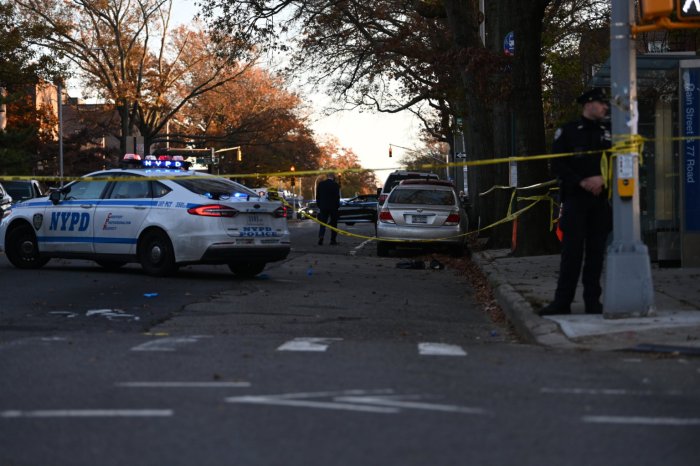By Adam Pincus
An early postcard shows a building which still stands today surrounded by grassy yards and towering trees and another card has a bucolic scene of the early years of baseball played in a wide open field.These and other century-old visual memories of the neighborhood were presented in a recent slideshow lecture given by Jim Driscoll, the president of the Queens Historical Society, in a new media room in the historic Kingsland Homestead in Flushing. The lecture was part of an informal series on borough neighborhoods which began last fall and will continue into the spring, at the Weeping Beech Park at 143-35 37th Ave.Driscoll discussed the Edward E. Sanford home, still standing on 47th Avenue between 104th and 102nd streets, shown in a postcard surrounded by open space near the turn of the last century. The building, built only a few years after the Civil War, remains on a large lot, but is now crowded with neighboring buildings.In the 19th century, an open field located in an area now bounded by 34th and 37th avenues and Junction Boulevard was converted into a race track. Driscoll said the track, originally called the National Racetrack, later became the Fashion Race Course, after a famous horse named Fashion. A field in the track hosted the first baseball game for which admission was charged, Driscoll said, in 1858.The only remnant of the track today is the street name National Street, he said, which formed a border of the property.The name Corona came after the streets of the village were originally laid out in 1854, he said. At the time it was called West Flushing and developers were trying to attract early commuters to the area.It was a resident named Thomas Waite Howard who suggested the new name, which means crown in Spanish. “He felt it would be the crown of Queens,” Driscoll said.The packed audience of about 40 seemed to enjoy the presentation. John Sola, 61, of Fresh Meadows, was drawn to the slideshow through his family's history. His grandparents lived in Corona on 98th Street, in what was once a heavily Italian area.I thought it was very good, very educational,” Sola said of the presentation. “It is nice to reminisce.”Driscoll delivered the lecture relying heavily on a book published in 1986 by Vincent Seyfriend called “The Story of Corona: From Farmland to City Suburb.”The historical society has given neighborhood aficionados the history of Flushing and Jackson Heights in recent months and will be presenting a lecture on Elmhurst next, probably in April, Driscoll said. He saw interest in Corona as a testament to the passion current and former residents feel toward the town.”Corona still has a lot of people living there that grew up there,” he said, or they moved but still live in Queens. “It was very much a village, with a small town feel.”Reach reporter Adam Pincus by e-mail at news@timesledger.com or by phone at 718-229-0300, Ext. 154.





























